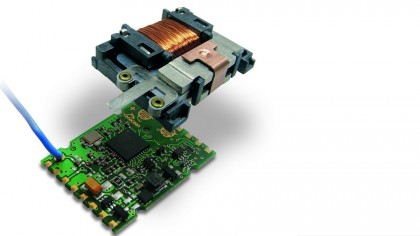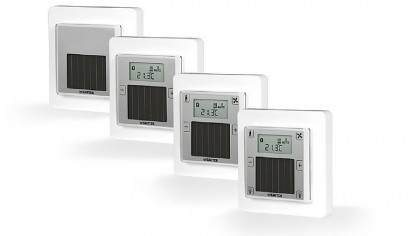How the smart building could save the world
Could automated buildings able to harvest their own energy help create a self-powered IoT?
Smart skin: the retro-fit
A honourable mention at the 2016 eVolo Skyscraper competition went to South Korea's Soomin Kim and Seo-Hyun Oh, whose Sustainable Skyscraper Enclosure concedes that there's no point rebuilding Manhattan's hundreds of skyscrapers to become ZEBs. Why not wrap them in a smart skin instead?

In this concept, circular sensory panels equipped with temperature and humidity sensors, as well as solar cells, use artificial intelligence to regulate the temperature within the building inside the skin. Designed to encourage plant growth on platforms attached to the structure that holds the skin in place (the plants would be tended by drones, of course), the skin also collects and purifies rainwater.
A self-powered IoT?
If the future is a wireless Internet of Things, then that's going to mean more energy used just to pass data between devices. IoT equipment generally uses very small amounts of electricity, but devices still require batteries that need to be produced, recharged, replaced, and then thrown into landfill.

Cue the EnOcean Alliance, whose wireless standard for self-powered switches and sensors for intelligent buildings is based on the 2.4GHz frequency radio band, which includes ZigBee. EnOcean'sECO 200 electromechanical energy converter harvests kinetic energy to power wireless signals, saving 40% in energy and operating costs for the building owner.
"When pressing a switch, an electro-mechanical energy converter is activated, and uses this movement to generate energy for a telegram," says Zeljko Angelkoski, Marketing Communications Director atEnOcean, further explaining that it can turn appliances and lights on and off, and even create different scenes for LED lights. "The same functionality can be used for a kinetic window contact, which registers if a window is open or closed, or a self-powered water sensor," he adds.
The latter is about preventing flooding from a bathtub or washing machine – the energy converter is activated when water touches the swelling material below the sensor, sending a wireless signal to prevent water damage.
It's this kind of tech that's helping the IoT run on a carbon-neutral version of ultra-low power radio. "Energy harvesting switches, sensors and actuators using EnOcean technology can supply necessary information for the IoT from billions of measuring points," says Angelkoski.
Are you a pro? Subscribe to our newsletter
Sign up to the TechRadar Pro newsletter to get all the top news, opinion, features and guidance your business needs to succeed!
Wireless sensor-automated buildings
In February 2016, element14 introduced two Raspberry Pi-based self-powered IoT starter kits that include element14's micro-computer boards and EnOcean's energy harvesting wireless sensors, and integrate into IBM's Watson IoT Platform.
Other EnOcean energy harvesters include Pressac Sensing's solar-powered, wireless CO2, temperature and humidity sensor, and Sauter's ecoUnit 1 room-operating unit, which has a solar-powered LCD display that has a battery which runs for 120 hours in a darkened room.

There are scores of others, too: the smart building manager can monitor the lights, temperature, humidity, status of doors and windows, and any kind of movement within the building, using only solar or kinetic energy. Crucially, the 400 companies that belong to the EnOcean Alliance produce 1,500 components that are easily interoperable. Over 4,000 such sensors and products can be found in the 230 metres tall Torre Espacio in Madrid, the world's tallest wireless sensor-automated building.
An interoperable, self-powered IoT in a network of smart, sustainable buildings? With the UN predicting a global population of nine billion by 2050 – undoubtedly resulting in overcrowded cities and more demand for skyscrapers – and a fast-growing IoT on the rise, smart buildings can't come soon enough.
- 1
- 2
Current page: Smart skin and a self-powered IoT
Prev Page Introduction and sustainable skyscrapersJamie is a freelance tech, travel and space journalist based in the UK. He’s been writing regularly for Techradar since it was launched in 2008 and also writes regularly for Forbes, The Telegraph, the South China Morning Post, Sky & Telescope and the Sky At Night magazine as well as other Future titles T3, Digital Camera World, All About Space and Space.com. He also edits two of his own websites, TravGear.com and WhenIsTheNextEclipse.com that reflect his obsession with travel gear and solar eclipse travel. He is the author of A Stargazing Program For Beginners (Springer, 2015),
